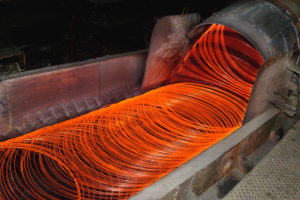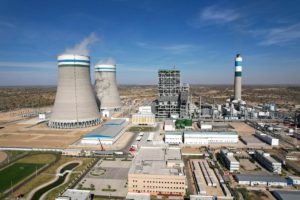India’s decarbonisation plans have an Everest to climb. The government aims to reach ‘net zero’ by 2070, and achieving this goal will mean decarbonising its industries, which account for 28% of the country’s gross greenhouse gas emissions.
In many areas, there are clear pathways to reducing emissions of carbon dioxide, such as improving energy efficiency, and switching to renewable power and clean fuel-based processes. However, in some sectors such as steel and cement, which are crucial for India’s infrastructure development and growth, there will still be residual carbon dioxide emissions that need to be tackled. In these ‘hard-to-abate’ sectors, new technologies need to step in at scale.
It is for these ‘hard-to-abate’ sectors that India needs carbon capture, utilisation and storage, or CCUS. Recent analyses by the New Delhi-based think tank Council on Energy, Environment and Water (CEEW) found that up to 56% of emissions generated by India’s steel industry and 67% of emissions from the cement industry could be abated by CCUS, if the technologies are successfully scaled.
What is CCUS?
CCUS refers to processes that capture carbon emissions at their source, such as furnaces, boilers or kilns, before they enter the atmosphere. With carbon capture and utilisation, captured CO₂ is utilised in processes like the production of chemicals and fuels. Notable examples include the ArcelorMittal-Lanzatech plant in Belgium, which converts captured CO₂ from its steel plant into ethanol, and the use of captured carbon to produce urea in fertiliser plants.
Carbon capture and storage, on the other hand, involves injecting the captured CO₂ into underground rock formations or trapping it in certain minerals as carbonates. As of July 2023, 41 operational carbon capture and storage facilities worldwide had the capacity to capture nearly 50 million tonnes of CO₂ per year. In comparison, India emitted about 2.7 billion tonnes of CO2 in 2022: 7% of total global emissions of 38.5 billion tonnes. However, many of these operational facilities focus on enhanced oil recovery (EOR), in which oil companies inject CO2 into reservoirs to force oil out.
CCU can result in permanent carbon sequestration only if the resultant product is not fuel
CCUS cannot be considered an alternative to transitioning away from coal, oil and gas extraction. While EOR has been employed since the 1970s by the oil industry, it cannot lead to a net emissions reduction, as only a part of the injected CO₂ stays underground. Also, EOR will lead to increased oil production, contrary to the very purpose of decarbonisation. CCU can result in permanent carbon sequestration only if the resultant product is not fuel; CCU-based fuels (including oil and gas extracted using EOR) will eventually release CO₂ when they are burned.
Many major fossil fuel-consuming sectors such as power and transport are already transitioning to cleaner, readily available alternatives to fossil fuels. But certain industries which produce essential commodities like steel, cement, fertilisers and chemicals cannot fully or immediately decarbonise, as this would entail switching production to completely different methods that would need new plants or technologies to be established. Apart from the massive costs needed to replace infrastructure, such a switchover could take decades. These industries are essential for economic growth and are highly price-sensitive. They also need to monetise the cost of carbon capture to manage the premiums on their green products, which is possible through the sale of CCU products. This is one of the reasons why the first Global Stocktake agreed to at COP28 calls on governments to accelerate CCUS, particularly in hard-to-abate sectors.
How can carbon capture help India?
India’s plan to become a USD 5 trillion economy by the end of this decade largely depends on industrial growth. Consequently, we can expect a corresponding increase in greenhouse gas emissions from all hard-to-abate industries, which currently emit around 700 million tonnes of CO₂ each year.
India is already the second-largest producer of steel and cement. Currently, the most promising option for carbon-neutral primary steelmaking is through green hydrogen (hydrogen produced using renewable energy). However, CEEW analysis suggests that hydrogen-based steel is approximately 50-127% more expensive than conventional steel today. As regards cement, roughly 56% of emissions come from the decomposition of limestone, which cannot be mitigated without carbon capture.
CEEW analysis indicates that 40% of the more than 500 million tonnes of CO₂ currently emitted annually by India’s steel and cement industries can be mitigated through energy efficiency measures, use of renewable power and alternative low- or zero-carbon fuels and raw materials. The rest, 310 million tonnes of CO₂ emissions, can only be mitigated through CCUS.
Beyond steel and cement, this technology could be applied at other industrial facilities that have a significant volume and concentration of CO₂ emissions even after adopting renewable energy, such as refineries, fertiliser plants and chemical plants. India produces around 250 million tonnes of petroleum products per year and 12 million tonnes of chemicals (such as methanol and soda ash). A significant portion of these could be substituted with CCU-based products.
When it comes to storage, CEEW analysis has found that in theory, India has the capacity to store 359 billion tonnes of CO₂, of which 144 billion tonnes would be in saline formations (porous rock formations deep underground that contain unusable salty water), and 170 billion tonnes in basalts (chiefly in the states of Maharashtra and Madhya Pradesh). Basalts are uniquely attractive because when injected, CO₂ is mineralised to form solid carbonates and hence poses minimal risk of leakage in the long term. India is one of the few countries with onshore flood basalts (rock formations resulting from volcanic eruptions that cover large areas), and can leverage these for large-scale storage.
The challenge now
The very cost of carbon capture is a significant barrier to its commercial viability. Carbon capture through traditional amine solution-based methods costs approximately USD 45-50 per tonne of CO₂ for exhaust gases with a high concentration of CO₂. This constitutes about 55% of the overall cost of storage.
Green hydrogen is a critical input in carbon capture and utilisation, but currently, the cost of producing green hydrogen from electrolysis of water in India is around USD 4 per kg. This high cost, in addition to the expense of capture, results in significant premiums on carbon capture and utilisation-based products.
Capture and underground storage technologies are still in fairly nascent stages, with limited success seen in global capture and permanent storage projects. However, significant investments are being made globally, with 351 new CCS facilities under construction. Past projects in saline aquifers have dealt with several risks to the security and stability of stored CO₂. Basalts may prove safer in this regard, as the CO₂ is mineralised with minimal post-injection risks.
In India, much of the estimated storage potential is based on surface-level knowledge of geological formations. Further, the development of these resources and infrastructure for capture and transport of CO₂ for safe commercial injection can take up to two decades. This is a long lead time for the industry to wait.
India needs policy changes
For CCUS to be a viable and scalable way of reducing emissions from hard-to-abate sectors in India, the following steps are required.
First, develop alternative technologies for carbon capture to reduce costs. Innovative technologies such as metal hydroxide and metal organic frameworks should be considered to bring down the cost of carbon capture.
Second, include CCU under India’s National Green Hydrogen Mission, which aims to make the country a global hub for the production, usage and export of green hydrogen. Green hydrogen is fundamental for the production of synthetic hydrocarbons, and so the national mission should be extended to include targets and incentives for CCU products.
Third, assess and explore basalt resources as a priority. Detailed mapping and assessment of basalt is required to determine its true storage potential and identify locations for carbon injection. Pilots are also needed to determine feasibility, identify operational constraints, and give confidence to the industry that CCS is possible in India.
It is time for India to actively consider and develop CCUS technologies across its industries
Fourth, license acreage for CCS development. Providing land exploration licences to public sector undertakings or private parties will accelerate the identification and development of potential CO₂ reservoirs. The government can then generate revenue based on the amount of CO₂ injected and stored.
Fifth, develop and update existing industry standards and regulations to incorporate carbon capture and storage. Regulations for transporting CO₂, operating CCUS sites and safety standards need to be developed to avoid potential hazards such as CO₂ leakage or groundwater contamination.
And finally, build a collaborative research network. Experience and learnings from other geographies (such as the United States, Iceland, Norway and Australia, which already have operational CCS facilities) will help accelerate the development of CCS in India.
India is charging towards decarbonisation, embracing renewables and aspiring to lead in green hydrogen. To solidify its net-zero goals, it is time for India to actively consider and develop CCUS technologies across its industries.








